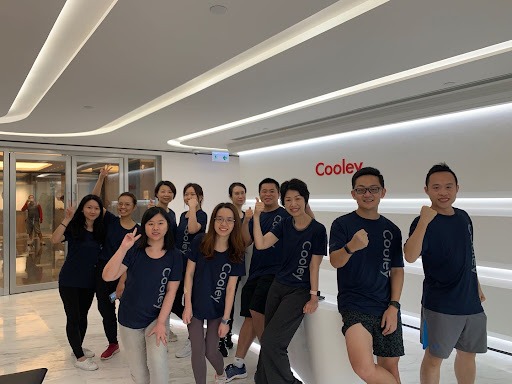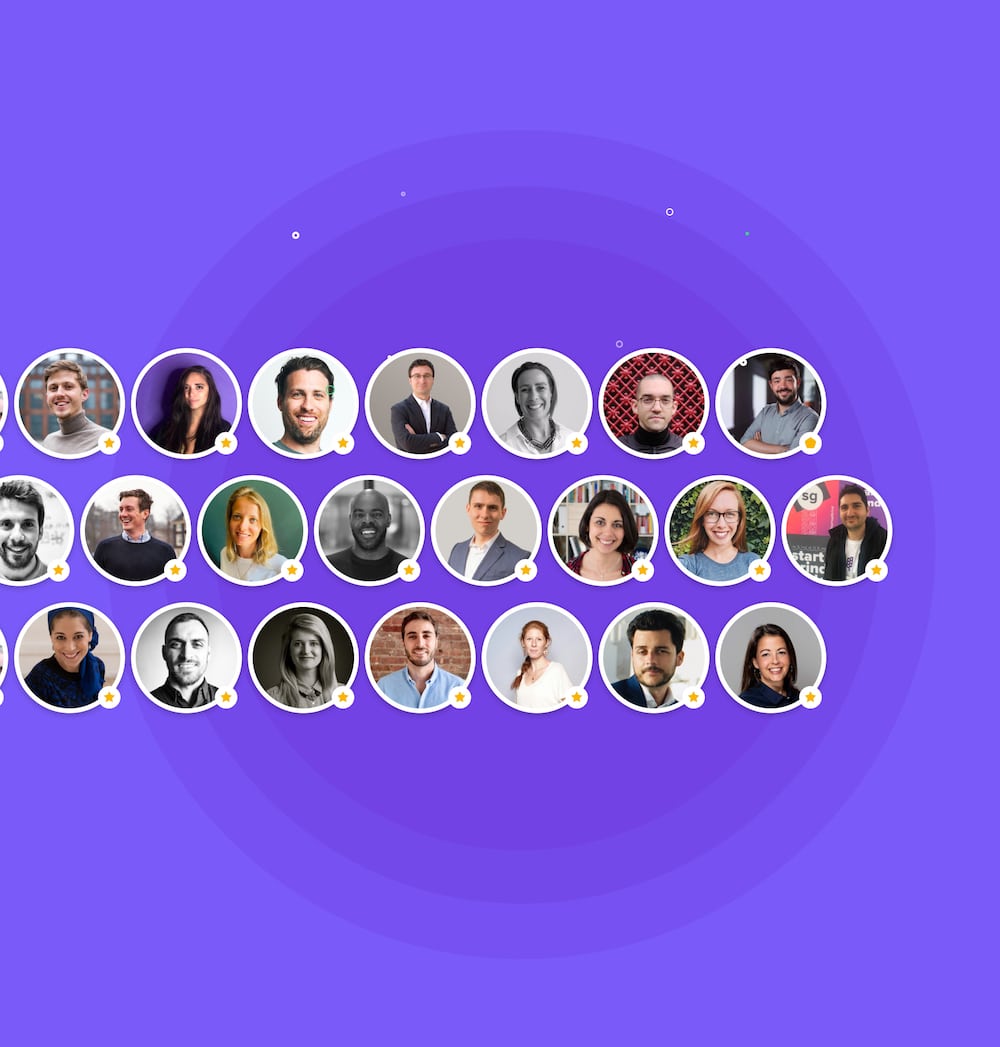Why Mentoring In The Workplace So Important (Plus Best Practices and Examples)
While teaching, training, and mentorship are certainly related, mentorship is about so much more.
It can be an incredibly valuable asset to both businesses and employees. And in this article, GrowthMentor will be explaining why!
Let’s get started!
What Is Mentoring In The Workplace?
Mentoring in the workplace—or workplace mentoring—is a kind of workplace relationship in which a more experienced person (i.e., the mentor) provides guidance, advice, and support to a less experienced person (i.e., the mentee).
In many cases, mentoring in the workplace is internal—meaning employees within an organization take on both the mentor and mentee roles. With that being said, there’s growing demand for external workplace mentoring programs, in which employees are matched with high-performance mentors that have a proven track record from different organizations. External mentorship is particularly useful for companies that don’t have enough mentors with enough expertise in a particular function.
How does mentoring in the workplace actually work?
In addition to the internal versus external mentoring distinction, there’s also a distinction between the two ways workplace mentoring arises at an organization: organically versus formally.
Organic Workplace Mentoring
Organic workplace mentoring is when relationships form naturally between employees, without any intervention from management or HR. These relationships can occur between two people who share a common interest, or they can be the result of one person asking another for advice.
Organic workplace mentoring is extremely common. Less experienced employees are inclined to ask for guidance when faced with unfamiliar problems, and more experienced employees tend to offer the guidance they need out of kindness (or at least the desire to keep things running smoothly).
There are a few major problems with organic workplace mentoring, though:
- It can be inaccessible. Not everyone is equally comfortable asking for help—especially in informal settings.
- It can be biased. If mentors and mentees share the same manager, there’s a risk that mentoring relationships will be unfair or unbalanced.
- It isn’t goal oriented. Mentees who are mentored informally often don’t have clear objectives for their development, which can make it difficult to gauge the effectiveness of the mentoring relationship.
Formal Workplace Mentoring
Formal workplace mentoring is when relationships are established between employees by management or HR. These relationships are typically part of a workplace mentoring program, which can take many forms.
The most common type of formal workplace mentoring is a one-on-one mentor-mentee program. In these programs, each mentee is paired with a mentor who they meet with on a regular basis for advice, guidance, and skill-building.
Other types of formal workplace mentoring include:
- Peer-to-Peer Mentoring: Employees are matched with mentors who have similar backgrounds and experiences (or are at similar stages of their careers) to grow together.
- Mentor-Protégé Mentoring: More experienced employees are paired with less experienced employees for long periods of time, with a focus on high-level development.
- Cross-Functional Mentoring: Employees from different departments or divisions are paired together to promote interdepartmental community and knowledge-sharing.
- Reverse Mentoring: Less experienced employees mentor more experienced employees—usually on topics like technology, social media, or diversity and inclusion—to bridge intergenerational knowledge gaps.
- Group Mentoring: More experienced employees lead groups of less experienced employees through a structured program.
- External Mentoring: Junior and senior employees are matched with mentors from different organizations who can provide an objective perspective and unique insights through mentorship platforms like GrowthMentor.
Examples of Mentoring in the Workplace
To really get a sense for the variety of workplace mentoring programs out there, it can be helpful to look at examples. Here are two exciting examples of workplace mentoring programs in action:
Avison Young
Avison Young—a commercial real firm from Canada—has found success with a group mentorship designed to promote diversity and inclusion at the company by helping women reach senior roles at the company.
Women are able to join employee resource groups (ERGs) which are then paired with mentors from company management. These mentor groups meet weekly for sessions on leadership, time-management, and networking—topics that are important for career advancement.
Cooley
Cooley is a global law firm that uses its mentorship to onboard new hires quickly and effectively. The company uses software to automatically match new hires with more senior mentors in a program called the Cooley Academy Mentoring Program (CAMP).
Mentors and mentees meet for regular sessions—both structured and unstructured—to discuss things like delegation, goal setting, and career pathing. To keep things fun, the company also runs weekly challenges where mentor-mentee pairs can earn points and move up the program’s leaderboard.
Related: How to Start a Mentorship Program for Your Startup
Why Is Formal Mentoring In The Workplace So Important?
There are countless benefits of formal workplace mentoring programs we could go over, but in the interest of brevity we’ll hit you with the highlights:
1) Transferring Job-Specific Knowledge
Mentoring in the workplace is important because it allows employees to transfer job-specific knowledge to one another. This can be done organically, or through formal programs put in place by management or HR. In either case, the benefits are clear: employees learn from their peers and mentors and grow as professionals.
2) Improving Employee Engagement
Employee engagement rates are currently at all-time lows within the U.S. and around the world—only 31% of employees reporting being engaged at work. According to data from Gallup, there are five key reasons for this:
- lack of training and development
- lack of communication
- lack of advancement opportunities
- lack of accountability
- lack or social ties
As it happens, well-executed formal mentorship programs directly address all five of these issues! The result? Happier, more productive employees and…
3) Increased Retention Rates
Formal workplace mentoring programs have proven themselves as powerful tools for increasing retention rates. According to data from the Association for Talent Development, employees who take part in formal mentorship programs are 50% less likely to consider working elsewhere than those who don’t.
A high retention rate brings too many benefits to list in full here, but we will cover one important one: cost savings. Employee turnover is incredibly costly—whether you realize it or not. One study from Bullitin estimates that the total cost of replacing an employee is:
- 33% of annual salary for non-technical employees
- 100-150% of annual salary for technical employees
- 213% of annual salary for C-level executives
In summary, prioritizing employee retention through mentorship programs is a smart financial decision.
4) Improved Employee and Business Performance
Formal workplace mentoring programs are great for improving employee performance. The Association for Talent Development study we mentioned earlier also found that 57% of mentees thought their company’s mentorship programs were very effective at helping them to achieve learning goals (i.e., skill development, learning company culture, etc.).
In addition, 37% of mentees thought their company’s mentorship programs were very effective at helping them to achieve business goals (i.e., career advancement, stress reduction, etc.).
5) Fostering a Diverse and Inclusive Workplace
Formal workplace mentoring programs are also important because they help to foster a more diverse and inclusive workplace. By matching employees from different departments, divisions, or even organizations together, these programs help break down silos and promote understanding and collaboration.
What’s more, pairing employees of different ages, genders, races, and backgrounds together is good for business. Studies have shown that companies with diverse teams are 1.4 times more likely to have financial returns above their industry medians.
Who Can Benefit From Formal Mentoring In The Workplace?
Formal mentoring in the workplace can be beneficial for employees at all levels of an organization. However, research has shown that there are four groups of employees who stand to benefit the most from these programs:
1) New Hires
Mentorship programs can be particularly beneficial for new employees, especially for remote companies, where the new employee is literally starting a job from home. After all, they’re coming into an organization with little to no knowledge of its culture, values, and way of doing things. A mentor can help them acclimate to their new surroundings, help the new employee feel less isolated, and set them up for long-term success through well-defined objectives, milestones and goals.
2) Experienced Employees
Workplace mentorship isn’t just for junior employees and new hires. At GrowthMentor, we help start-up founders, small business owners, and high-level executives connect with expert mentors who can help them fill in the knowledge gaps that are limiting their growth potential.
Business owners and founders usually wear many different hats—CEO, CMO, CFO, and so on. It can be hard to excel in all of these roles without the benefit of personalized advice. That’s where we come in!
With GrowthMentor, you can browse through hundreds of mentors with demonstrated success in areas ranging from email marketing to user research. You can either book one-off calls to get specific questions answered, or become a member for unlimited calls with a diverse set of experts!
3) High-Potential Employees
High-potential employees are those with the potential to move up within an organization. Formal mentorship programs can help these employees reach their full potential by connecting them with mentors who can provide guidance, advice, and access to important networks.
These programs also help keep high-potential employees engaged (and retained) for the long-haul.
4) Diverse Employees
Diverse employees—those from different backgrounds, genders, races, etc.—can also benefit from formal mentoring programs. These programs can help them push past the barriers that limit representation in many corporate settings and lead to more inclusive companies.
So there you have it: four groups of employees who stand to benefit from formal workplace mentoring programs.
How To Get A Workplace Mentoring Program Up And Running
Formal workplace mentoring programs can be tremendously beneficial for employees and organizations alike. But how do you get a program up and running?
Here are a few tips:
1) Define Goals
Before you do anything, you need to sit down and define the goals of your program. What are you hoping to achieve? Do you want to improve retention rates? Increase employee engagement? Help employees reach their full potential? Once you’ve answered these questions, you can begin designing your program that’s in line with these goals.
2) Get Senior Staff On Board
Once you’ve defined the goals of your program, it’s time to get senior staff on board. You’ll need their buy-in to make sure the program is successful. Hold a meeting or meet individually with company decision makers to start gauging interest and fielding ideas.
3) Create a Plan
Now it’s time to start putting together a plan. Who will run the program? How will you find mentors? What kind of training will they need? How will you match employees with mentors? Answering these questions will help you create a roadmap for your program.
4) Recruit Mentors and Mentees
With a plan in place, it’s time to start recruiting mentors and mentees. You can use internal channels like your company newsletter or intranet to spread the word. You can also reach out to professional networks and organizations.
If you’ll be opting to bring in external mentors, GrowthMentor is a great way to connect with experts in a wide range of fields. We have a network of over 400 mentors with experience in everything from content marketing to idea validation.
Plus, you can search by collections to find specialized talent ready to meet you in whatever unique circumstances you find yourself in.
5) Train Mentors and Mentees
Once you’ve recruited a group of mentors and mentees, it’s time to provide them with training. This will ensure that they’re prepared for their roles and know what to expect from the program. It helps to provide guides, documentation, templates, and activities as needed to make sure things run smoothly (at least at first).
6) Launch The Program
After all the planning and preparation, it’s finally time to launch your workplace mentoring program! Make sure to promote the program internally, so employees are aware of it and can take advantage of it. Use tools on your chat app (e.g., Microsoft Teams or Slack) like CoffeePals to encourage participation.
7) Evaluate And Adjust
Once the program is up and running, it’s important to measure its success and make adjustments as needed. This might involve surveying mentors and mentees, collecting data on employee retention or engagement, and speaking with program participants.
Mentoring in the Workplace Can Boost Growth
If your organization doesn’t already have one in place, now is the time to start planning and implementing a program. Doing so can help to improve job satisfaction, enhance leadership skills, increase job performance, and foster a more diverse and inclusive workplace—and that’s good for everyone.
If you’re looking for a mentor that can meet you where you are in areas like marketing, scaling, automation, or team-building, GrowthMentor has you covered.
Sign up today to book one-on-one calls with industry-leading experts who can help make your professional goals a reality!







